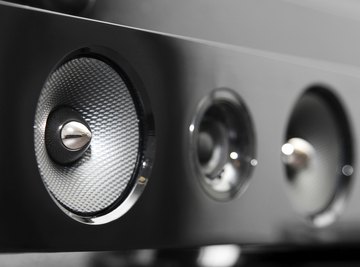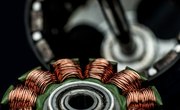
The magnets you’re familiar with, in toys or stuck on refrigerator doors, are called “permanent” because they have their own magnetism that stays strong for years. Another kind, called “electromagnets,” attract metal only when they’re connected to electricity; when turned off, their magnetic attraction goes away. Electromagnets are very useful and can be found in home appliances, computers, industrial machines and many other things. You can make your own electromagnet from a few simple parts.
Parts of an Electromagnet
A basic electromagnet has three main parts: a piece of iron, a coil of wire and a battery or other source of electricity. The wire coil is wrapped around the iron part, which is usually a bolt or similar shape. The battery connects to the wire and provides electricity.
What Electromagnets Do
When the electromagnet wire is connected to the battery, the ends of the bolt become magnetized and can pick up pieces of iron and steel. Disconnect the battery, and the pieces fall from the magnet. The main advantage of an electromagnet over a permanent one is that you can turn an electromagnet on and off.
Things That Have Electromagnets
Many everyday appliances and devices have an electromagnet, although it may be hidden inside the device. For example, an electronic door lock has an electromagnet in it that opens the lock mechanism. A radio speaker has an electromagnet in it that moves the speaker cone rapidly in and out, producing sound waves. Electric motors, such as those found in toys and appliances, use electromagnets. In some cases, electromagnets are big and easy to see. A scrapyard crane, for example, uses a large, powerful electromagnet to lift and move junked cars and other metal.
Make Your Own Electromagnet
To make an electromagnet, you’ll need either a 6- or 9-volt battery, 10 feet or more of insulated wire and an iron bolt or nail. The insulation need not be thick; in fact, the thinner it is, the more wire you can put on your bolt. Wrap the wire around the middle part of the bolt, making the turns smooth and even and leaving an inch or so of the bolt ends exposed. Carefully trim the insulation from about 1/2 inch of each end of the wire with a wire stripper or hobby knife. When you connect the bare copper ends of the wire to the terminals of the battery, you can pick up small staples, iron filings or other metal bits with the ends of the bolt. The wire may become hot to the touch; if it does, disconnect the battery and let the electromagnet cool.
References
About the Author
Chicago native John Papiewski has a physics degree and has been writing since 1991. He has contributed to "Foresight Update," a nanotechnology newsletter from the Foresight Institute. He also contributed to the book, "Nanotechnology: Molecular Speculations on Global Abundance." Please, no workplace calls/emails!
Photo Credits
ronstik/iStock/Getty Images
